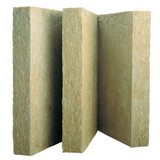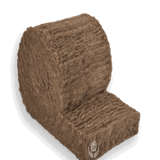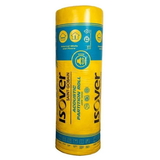- Blogs
- How to Insulate Behind Plasterboard: A Guide for Homeowners
How to Insulate Behind Plasterboard: A Guide for Homeowners

Plasterboard, also known as drywall or gypsum board, is a common material used to cover the interior walls of houses. It is made of a thin layer of gypsum sandwiched between two sheets of paper or cardboard. Plasterboard is easy to install, durable, and fire-resistant, but it has one major drawback: it is not very good at insulating heat and sound.
That’s why many homeowners choose to insulate behind plasterboard, especially in older houses that have poor insulation. Insulating behind plasterboard can improve the thermal comfort, energy efficiency, and soundproofing of your home. It can also reduce your heating and cooling bills, lower your carbon footprint, and increase the value of your property.
In this article, we will show you how to insulate behind a plasterboard using different types of insulation materials. We will also explain how to install them properly, how to choose the best one for your project, and where to find more information and products. By the end of this article, you will know how to insulate behind a plasterboard and enjoy the benefits of a warmer, quieter, and greener home.
Types of Insulation Available Behind Plasterboard
 There are many types of insulation that can be used behind plasterboard, depending on your needs and preferences. Here are some of the most common ones:
There are many types of insulation that can be used behind plasterboard, depending on your needs and preferences. Here are some of the most common ones:
- Mineral wool: This is a type of insulation made from natural or synthetic fibres, such as rock wool or glass wool. It has a high R-value (a measure of thermal resistance), which means it can keep your home warm in winter and cool in summer. It is also breathable, fire-resistant, and recyclable. However, it can be irritating to the skin and eyes, so you need to wear protective gear when handling it. Some examples of mineral wool products are Knauf Earthwool, Knauf RS45 Insulation - Mineral Wool Acoustic And Thermal Insulation, Rockwool RWA45 Mineral Wool Thermal And Acoustic Insulation Slab, and Rockwool Full Fill - Cavity Batt Insulation.
- Rigid foam: This is a type of insulation made from polystyrene, polyurethane, or polyisocyanurate. It has a higher R-value than mineral wool, which means it can provide more insulation with less thickness. It is also lightweight, easy to cut and fit, and moisture-resistant. However, it is not very breathable, which can cause condensation problems. It is also flammable and not very eco-friendly. Some examples of rigid foam products are Celotex GA4000 and Xtratherm XT/PR - PIR Rigid Insulation Board.
How to Install Insulation Behind Plasterboard
Installing insulation behind the plasterboard is not very difficult, but it requires some planning and preparation. Here are the general steps involved:
- Remove the plasterboard: The first step is to remove the existing plasterboard from the wall that you want to insulate. You can use a utility knife or a saw to cut along the edges of the plasterboard and then pry it off with a crowbar or a hammer. Be careful not to damage the wall studs or any electrical wires or pipes behind the plasterboard.
- Fit the insulation: The next step is to fit the insulation between the wall studs. You can use a tape measure or a ruler to measure the width and height of each cavity and then cut the insulation accordingly with a knife or scissors. You can use staples or nails to secure the insulation to the studs if needed. Make sure there are no gaps or overlaps between the pieces of insulation.
- Replace the plasterboard: The final step is to replace the plasterboard over the insulation. You can use new plasterboard or reuse the old one if it is in good condition. You can use screws or nails to attach the plasterboard to the studs. Make sure there are no gaps or cracks between the sheets of plasterboard.
- Finish the wall: The last step is to finish the wall by applying joint compound, tape, and paint over the plasterboard. You can also add any trim or moulding that you want.
When installing insulation behind the plasterboard, following the manufacturer’s instructions, safety precautions, and building regulations is important. You should also wear gloves, goggles, and a mask to protect yourself from dust and fibres. You should also have a helper to assist you with lifting and holding the plasterboard.
Here are some tips and tricks to make the installation easier and more effective:
- Use a stud finder to locate the wall studs and mark them with a pencil or tape.
- Use a level to make sure the plasterboard is aligned and straight.
- Use a drill bit or a hole saw to make holes for any electrical outlets or switches on the plasterboard.
- Use a utility knife or a saw to cut around any windows or doors on the plasterboard.
- Use a spray foam or caulk to seal any gaps or holes around the edges of the plasterboard or the insulation.
- Use a vapor barrier or a breathable membrane to prevent moisture from entering or leaving the wall cavity.
How to Choose the Best Insulation for Your Project![Insulate Behind Plasterboard]()
Choosing the best insulation for your project depends on several factors, such as:
- The size and shape of the wall cavity: The size and shape of the wall cavity determine how much and what type of insulation you can fit behind the plasterboard. For example, if you have a narrow or irregular wall cavity, you may need to use rigid foam or cotton insulation, which can be cut and shaped easily. If you have a large or regular wall cavity, you may have more options, such as mineral wool or slag wool insulation, which can fill the space more efficiently.
- The climate and location of your house: The climate and location of your house affect how much and what type of insulation you need behind the plasterboard. For example, if you live in a cold or humid area, you may need more insulation with a higher R-value, such as rigid foam or mineral wool insulation, which can keep your home warm and dry. If you live in a hot or dry area, you may need less insulation with a lower R-value, such as cotton or slag wool insulation, which can keep your home cool and breathable.
- The budget and availability of materials: The budget and availability of materials influence how much and what type of insulation you can afford and find behind the plasterboard. For example, if you have a low budget or limited access to materials, you may need to use cheaper and more common insulation, such as slag wool or mineral wool insulation, which can provide adequate insulation for your home. If you have a high budget or easy access to materials, you may want to use more expensive and rare insulation, such as cotton or rigid foam insulation, which can provide superior insulation for your home.
- The personal preference of the homeowner: The personal preference of the homeowner affects how much and what type of insulation they want behind the plasterboard. For example, if you are concerned about the environment or your health, you may prefer natural and eco-friendly insulation, such as cotton or mineral wool insulation, which can reduce your environmental impact and improve your indoor air quality. If you are more interested in performance or convenience, you may favour synthetic and easy-to-install insulation, such as rigid foam or slag wool insulation, which can offer more insulation with less hassle.
To help you choose the best insulation for your project, you can consult some sources of information and advice, such as:
- Online reviews: You can read online reviews from other homeowners who have used different types of insulation behind plasterboards. You can learn from their experiences, opinions, and recommendations. You can also compare the prices, ratings, and features of different products.
- Professional contractors: You can hire professional contractors who have expertise in installing insulation behind plasterboards. They can assess your situation, suggest the best options, and do the job for you. They can also guarantee the quality and safety of their work. If you need more information or products on insulation, please contact us directly through our website Buy Insulation Online
- Energy auditors: You can contact energy auditors who can evaluate your home’s energy efficiency and identify areas where you can save energy and money. They can advise you on how much and what type of insulation you need behind the plasterboard. They can also provide you with an energy certificate that shows how well your home is insulated.
Frequently Asked Questions
Q: What is the purpose of insulating behind the plasterboard?
A: The purpose of insulating behind plasterboard is to enhance the energy efficiency of your home by reducing heat loss and improving thermal insulation.
Q: Can I insulate walls without removing the plaster?
A: Yes, you can insulate walls without removing the plaster. There are various methods available, such as using internal wall insulation or adding insulation directly over the plaster.
Q: What is internal wall insulation?
A: Internal wall insulation is a kind of insulation that is applied to the interior wall surface, usually without the need to remove the existing plaster. It helps to improve thermal performance and can be an effective way to insulate solid walls.
Q: Can I use external wall insulation instead?
A: Yes, you can use external wall insulation as an alternative to insulating behind plasterboard. External wall insulation involves adding insulation to the exterior walls of your home, providing a thermal barrier.
Q: What kind of insulation can be used behind plasterboard?
A: There are various forms of insulation that can be used, including insulation boards, blanket insulation, blown-in cellulose insulation, and sheep's wool insulation. The choice of insulation will depend on factors such as the desired level of thermal performance and budget.
Q: How is insulation applied behind plasterboard?
A: Insulation can be applied by fixing it directly to the wall or by creating a cavity between the plasterboard and the wall surface. Insulation products such as insulation slabs or batts can be used for this purpose.
Q: Can I insulate solid walls without removing the plaster?
A: Yes, it is possible to insulate solid walls without removing the plaster. One method is to use insulated plasterboard, which has a layer of insulation already attached to it. Another option is to fix insulation boards directly to the wall.
Q: Can I insulate cavity walls with plasterboard?
A: Plasterboard itself does not provide effective insulation for cavity walls. Insulating cavity walls typically involves adding insulation material within the cavity space, which is then covered with plasterboard.
Q: Should I consider professional assistance for insulating behind plasterboard?
A: While it is possible to insulate behind plasterboard as a DIY project, it is recommended to seek professional assistance, especially if you are not experienced in construction or insulation work. Professionals will ensure proper installation and compliance with building regulations.
Q: Will insulating behind the plasterboard help with soundproofing as well?
A: Yes, insulating behind the plasterboard can also help with soundproofing. The added insulation can reduce sound transmission through the walls, providing a quieter and more peaceful environment inside your home.
Conclusion
Insulating behind plasterboard is one of the best ways to improve your home’s comfort, efficiency, and value. It can help you save money on your heating and cooling bills, reduce your carbon footprint, and enhance your living environment.
There are many types of insulation that can be used behind plasterboard, such as mineral wool, rigid foam, slag wool, and cotton. Each type has its own advantages and disadvantages that depend on various factors. You should consider these factors carefully before choosing the best insulation for your project.

Samuel Hitch
Managing Director
Buy Insulation Online.
Leave A Reply
Your feedback is greatly appreciated, please comment on our content below. Your email address will not be published. Required fields are marked *











































































































































































































































































































































































